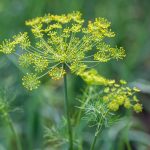We have some tips and tricks on how to treat powdery mildew on plants. If you’ve experienced it before, you know if can be a pain to get rid of.

Have you ever noticed a white fungus on your garden plants? It’s probably powdery mildew and it’s one of the most common plant diseases that exists, especially during the spring and summer months.
Table of Contents
What Does Powdery Mildew on Plants Look Like?
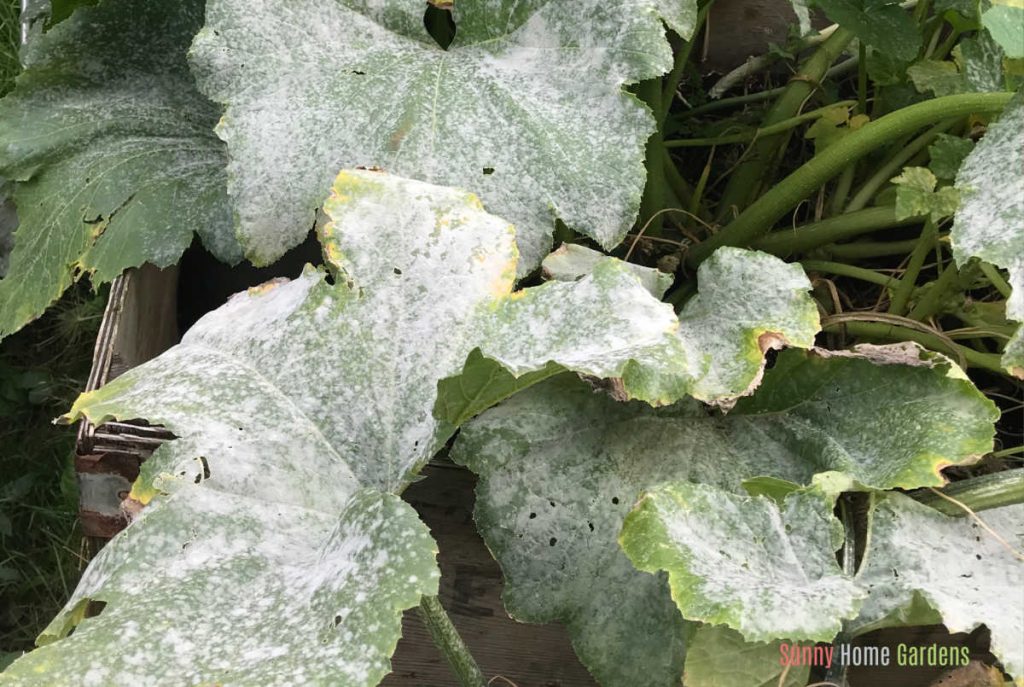
Powdery mildew is easy to recognize.
It is a mildew that forms a white or gray powdery film on the leaves, stems, and even on the fruit of your beloved plants.
It affects a wide variety of plants and when left untreated, it can suck all the nutrients from your plants. This results in weaker plants that produce less, untreated it can even lead to death.
What Is Powdery Mildew?
Unlike many fungal diseases in plants that thrive in humid and wet weather, powdery mildew can grow in warm and dry climates and even during cooler and rainy days.
Once the fungus begins to take over your plants, it slows down their growth. In the worst cases, when the infection is severe, it can even kill the plant.
How To Identify Powdery Mildew
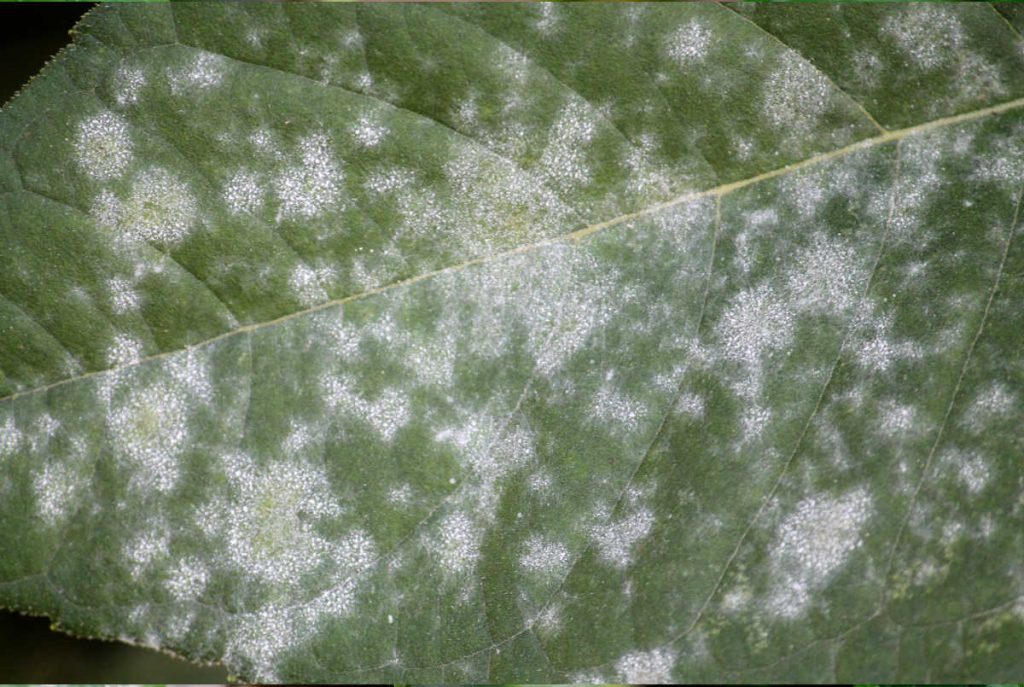
Once powdery mildew shows up, it can often be mistaken as a powder, dust, or dirt that can easily be swept away by your fingers — however, it can’t. It grows on the top and bottom parts of the plant as well as the stems, flowers, fruits, and vegetables.
Plants that are infected with powdery mildew may look like they’ve been dusted with flour or baking soda.
This fungal disease starts off as circular, powdery white spots on the top of leaves. It covers the upper part of the leaves first then it continues to grow on the undersides and other parts of the plant. The fungus causes the leaves to break, twist, and become disfigured.
Powdery Mildew Prevention
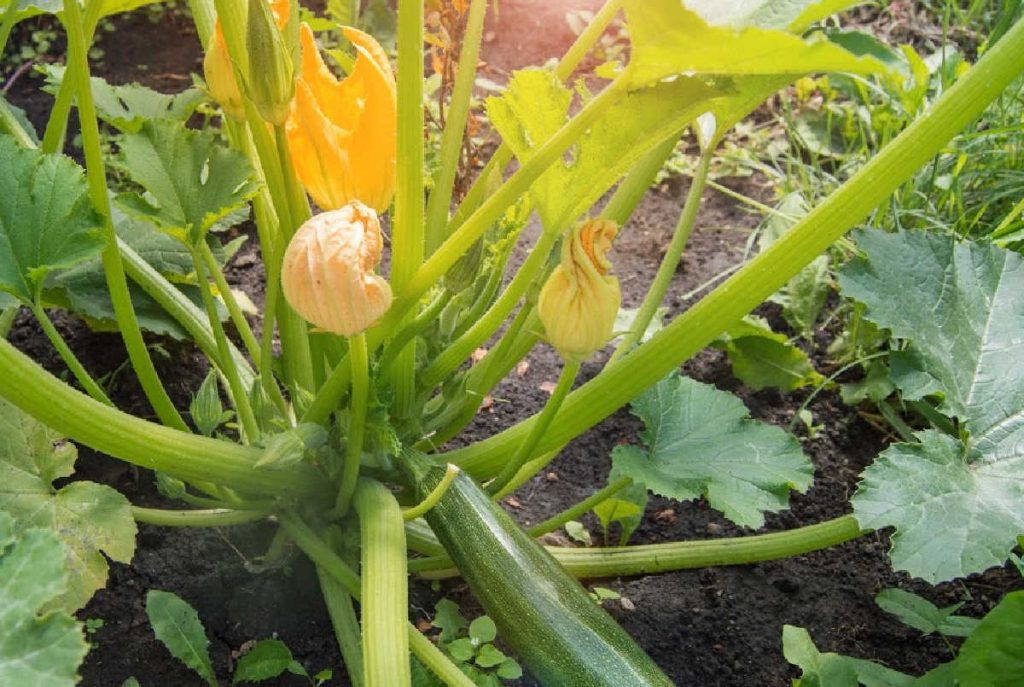
Here are some of the steps to take to prevent powdery mildew:
Make sure that there is enough space between your plants. This will provide enough airflow in the different parts of the plants as dampness helps the disease spread.
Avoid growing plants in the shade. Plants that are shaded for most of the day will encourage the growth of powdery mildew because they never have the chance to dry out from the sun’s rays.
Ensure that the soil can drain properly. Inadequate soil drainage can make the soil a breeding ground for diseases.
Avoid overfertilizing.
Use a compost that can boost the nutrients in the soil.
When watering, water the soil and not the plants. Splashing the leaves with water can spread fungi and bacteria leading to diseases. Water at the base of the plant.
Remove any dead stems and foliage as well as yellow leaves around the plants.
Use treatments like sulfur fungicide.
Don’t add any debris from affected plants to your compost.
POWDERY Mildew Treatment
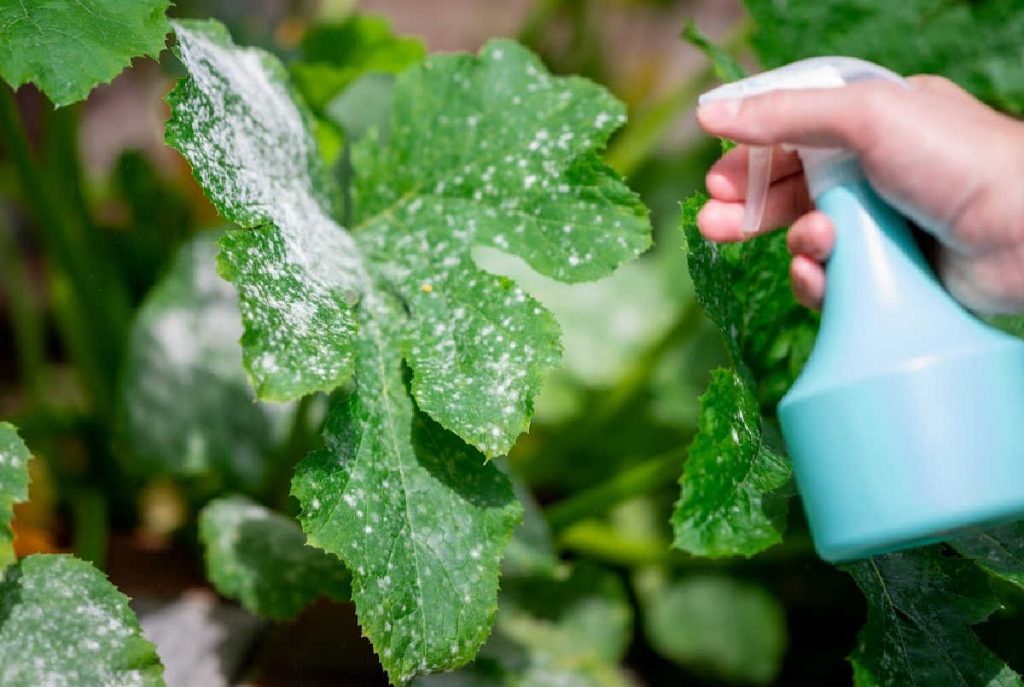
If you can’t prevent your plants from developing powdery mildew, don’t worry, there are several ways to treat it. There are environmentally-friendly options to eliminate this disease.
Milk
Milk is effective in killing powdery mildew, even when compared with chemical fungicides. When milk interacts with the sun, it produces free radicals that are toxic to the fungus.
There are two ways to use milk to take care of this disease:
Mix 2 oz powdered milk to 1 gallon of water, then spray the mixture directly onto the affected plant, at least twice a week.
Using whole milk, mix 1/2 gallon of milk to 3/4 of a gallon of water then spray onto the plants with powdery mildew twice a week.
Potassium Bicarbonate
Potassium Bicarbonate is a safe and effective fungicide that can kill all the spores it comes in contact with. Not only does it treat the plant, it’s also a great preventive treatment as it raises the pH level above 8.3, which is not ideal for fungal growth.
Mix 3 tablespoon of potassium bicarbonate, 3 tablespoons vegetable oil, and 1/2 teaspoon mild soap with 1 gallon of water. Spray the mixture onto the affected plants.
ACV
The acid in apple cider vinegar is effective in killing powdery mildew. However, make sure not to use it full strength as the acidity in the vinegar is strong enough to burn the plants and its leaves.
To prepare the mixture, mix 4 tablespoon of vinegar with a gallon of water. Spray onto the plants and reapply every three days or as needed.
Sulfur
Sulfur is an all-natural product which is effective in preventing as well as controlling powdery mildew. You can use the dust or the liquid when preparing the mixture.
To use sulfur, follow the dosing instructions that come with the product. Use an eye protector, gloves, and face mask when preparing it.
Garlic
This kitchen staple has a high sulfur content, making it an effective anti-fungicide. You can buy the commercial garlic oil from your local supermarket or you can prepare your own at home with these steps:
1. Crush six cloves of garlic then add it to one ounce of organic oil of your choice (100% pure cold-pressed neem oil works best) and one ounce of rubbing alcohol. Let the mixture sit for two days.
2. Strain the mixture then retain the liquid and crushed garlic.
3. Soak the crushed garlic again, this time, with a cup of water, for one day. Strain the mixture and dispose of the garlic.
4. Add the oil and alcohol mixture and the garlic water to one gallon of clean water.
5. Spray the mixture onto the affected plants and let it coat the leaves.
Although powdery mildew can not always be prevented, it is important to be prepared. With these tips, you’re assured that your plants will grow healthier and be less prone to this and other fungi.
If you found this helpful, I’d love for you to “Pin It‘!



